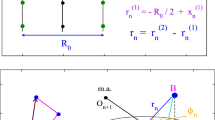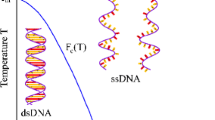Abstract:
The effect of electrostatic interactions on the stretching of DNA is investigated using a simple worm like chain model. In the limit of small force there are large conformational fluctuations which are treated using a self-consistent variational approach. For small values of the external force f, we find the extension scales as where is the Debye screening length. In the limit of large force the electrostatic effects can be accounted for within the semiflexible chain model of DNA by assuming that only small excursions from rod-like conformations are possible. In this regime the extension approaches the contour length as where f is the magnitude of the external force. The theory is used to analyze experiments that have measured the extension of double-stranded DNA subject to tension at various salt concentrations. The theory reproduces nearly quantitatively the elastic response of DNA at small and large values of f and for all concentration of the monovalent counterions. The limitations of the theory are also pointed out.
Similar content being viewed by others
Author information
Authors and Affiliations
Additional information
Received 13 October 1998 and Received in final form 9 June 1999
Rights and permissions
About this article
Cite this article
Lee, N., Thirumalai, D. Stretching DNA: Role of electrostatic interactions. Eur. Phys. J. B 12, 599–605 (1999). https://doi.org/10.1007/s100510051043
Issue Date:
DOI: https://doi.org/10.1007/s100510051043




